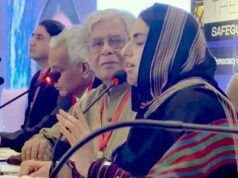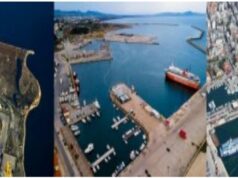CPEC : Pakistan’s economic situation

A view of the Gwadar port of Pakistan
Vice Premier of China’s State Council, He Lifeng, as the special representative of President Xi Jinping, attended the Decade of China-Pakistan Economic Corridor (CPEC) celebration, in Islamabad, the capital of Pakistan, from Sunday to Tuesday.
Pakistan may be celebrating but facts on ground indicate that Pakistan’s economic situation are bleak.
According to a recent report by Voice of America (VOA), critics have blamed CPEC investments for contributing to Pakistan’s economic troubles and growing debts while expressing concern about the so-called security threats.
While Western media outlets like VOA may report on the CPEC with a biased perspective influenced by their own ideologies, it cannot be denied that Pakistan’s economy has faced many challenges in recent years.
The root causes lie in longstanding internal political structural issues, an imbalanced economic structure and insufficient self-sustaining capacity. In addition problems have been certainly compounded by the CPEC itself.
Pakistan’s economic predicament is also closely related to its adverse relationship with giant India and of course the downtrend in global economic environment. The monetary debt burden because of CPEC, including the reckless inflation, has led to significant capital outflow from Pakistan. Moreover, the escalation of energy and food prices worldwide due to the Russia-Ukraine conflict has also negatively affected Pakistan’s economy.
There are also security risks which cannot be ignored. However, Pakistan’s security challenges did not arise overnight; they are closely linked to the tumultuous situation in Afghanistan. The 40-year-long war in Afghanistan and kowtowing with terrorist forces has led to their spill over now into Pakistan itself.
Coupled with Pakistan’s unique religious and ethnic social structure, as well as the wrong managing across ethnic and regional boundaries, terrorist elements now freely operate along the border of both countries, further weakening Pakistan’s security situation.
In addition the main projects of CPEC are in Gwadar which is located in Occupied Baluchistan. Now the Baluchs are fighting for their Liberation with increasing determination.
This has severely raised deep concerns for China regarding impact on the CPEC and Pakistan’s ability to remain in occupation of Baluchistan.
To safeguard the CPEC, Pakistan’s law enforcement agencies and government have implemented a series of measures to counter security risks, which has further alinieted the Baluch nationals.
Similarly the CPEC trespasses POK which is Indian territory and thus China has deliberately violated India’s Sovereignty. Also one day India is determined to liberate this occupied territory from the clutches of Pakistan.
Over the past decade, through this Belt and Road Initiative (BRI), the CPEC has had a hardly any positive impact on Pakistan. It has improved infrastructure only marginally, longstanding issues in Pakistan’s power and energy systems are still in doldrums and in addition adverse environmental conditions have emerged.
The CPEC has hardly generated any employment opportunities for the local residents along its route, most of the jobs have been given to the Chinese nationals.
The CPEC’s indispensable role in revitalizing Pakistan’s economy has failed miserably is widely seen with concern not only by parts of the Pakistani government and its people but also by international neutral observer organizations.
However, as the BRI marks its 10th anniversary, China has been tirelessly attempting to paint a rosy picture of the CPEC with its own perspective.
This is to show that, the success of the CPEC and the BRI, is going to generate increasingly significant positive economic effects globally, particularly in developing countries.
Regardless of how China may attempt to praise its CPEC, the China-proposed BRI will continue to bring more economic woes and reduce development opportunities for Pakistan.
The so called infrastructure development, the first phase of the CPEC has achieved only environmental degradation. As the project progresses into the second phase of, China will continue to tighten its strangle hold on countries along the route, burdening them with heavier debts.
While the CPEC is moving ahead, it also faces certain challenges. These challenges include floundering project implementation, issues of funding, and raising security problems in some regions.
Despite the differences in political systems and national sizes, China and Pakistan have maintained a strong and close cooperation.



